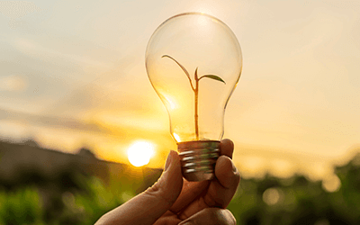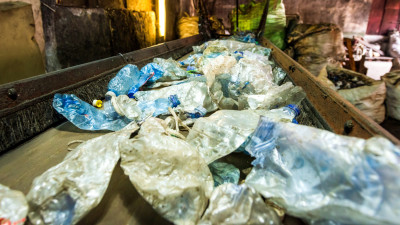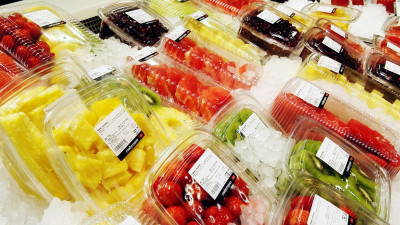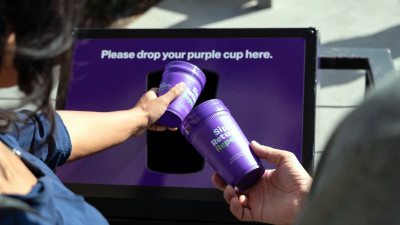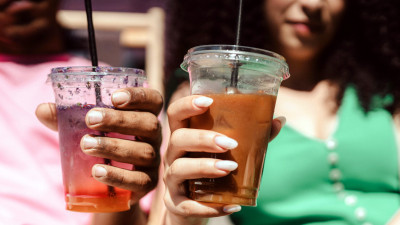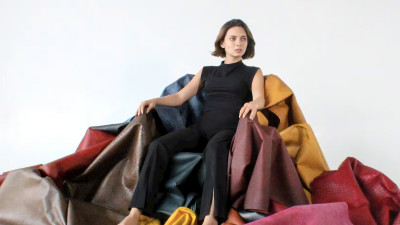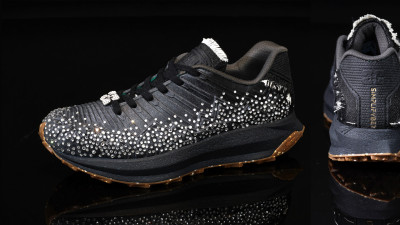The packaging industry in the U.S.
Trending:
Packaging Industry Challenged by Plastics BAN List, BillerudKorsnäs’ 3D-Forming Tech
The packaging industry in the U.S. is being challenged this month: four non-profit conservation organizations released a “Plastics BAN (Better Alternatives Now) List” in support of California’s Proposition 67 ban on carry-out plastic bags; and BillerudKorsnäs, which recently expanded into North America, is pushing the boundaries of paper packaging in the beverage sector with its 3D-forming technology.
On election day, Californians voted to uphold the statewide ban on carry-out plastic bags, 52.5 percent for to 47.5 percent against. The statute, which took effect immediately, requires grocers to charge at least 10 cents per recycled paper or reusable bag given to consumers and provides $2 million in loans to help plastic bag producers convert their businesses into reusable bag manufacturers, The Huffington Post reports.
“Annually, eight million tons of plastic escapes collection systems to end up in the ocean, where it contributes to the 5.25 trillion particles of plastic smog that choke our marine ecosystems,” said Anna Cummins, a Co-Founder and the Global Strategy Director of The 5 Gyres Institute. “Even more worrying is the prediction that there will be more plastic than fish in the sea by 2050 if we don’t solve this problem. Eliminating single-use disposable plastics must be a priority.”
Environmental groups recognize that the bag ban is not enough to truly tackle this problem. 5 Gyres, in partnership with Clean Production Action, the Surfrider Foundation and the Upstream Policy Institute (UPSTREAM), launched a report that identifies the most harmful plastic products sold in California alongside readily-available alternatives. The “Plastics BAN (Better Alternatives Now) List” is the first compilation of four datasets detailing the types of plastic pollution found in the state’s environment; it determines the top 15 offenders, which include food wrappers and containers, plastic bottle caps, and yes – plastic bags.
“The good news is that there are safer, more sustainable alternatives to nearly every one of the most harmful plastic products,” said Matt Prindiville, the Executive Director of Upstream. “What we need now is for industry and government to take action and phase out the worst offenders in favor of better alternatives.”
The report concludes that the worst offenders are designed for “on-the-go” applications, more recycling will not solve the plastic pollution problem, more data needs to be collected on pollution and the identities of responsible producers, and there are better alternatives for nearly every harmful plastic use. According to the group, California spends nearly $500 million annually to address problems posed by litter and plastic pollution – costs which are borne by taxpayers. The non-profits are calling on producers to invest in new material design, take financial responsibility for infrastructure costs and drastically reduce the use of single-use disposable plastic.
Meanwhile, BillerudKorsnäs made an appearance at Pack Expo 2016 in Chicago last week. Its patented Fibreform paper packaging is set to make waves; Ideal for liquids thanks to a thermal barrier, it can be embossed or foiled for brand impact and has a lower environmental footprint since its materials are all Forest Stewardship Council (FSC)-certified.
A combination of paper and plastic has historically been used for hot beverage cups to help hold the cups’ shape. BillerudKorsnäs has engineered a 3D fold formable paper that can hold its shape when force is applied, allowing for brand customization in the form of 3D design elements on the package and fitment attachments such as spouts and handles. The design also acts as a thermal barrier by creating small air pockets that act as a barrier between the flat surface and the consumer’s fingertips.
Also made of Fibreform is a newly-launched standup pouch that is also made from FSC-certified material. Robinson said that the company has proprietary fully compostable structures in development, with the potential of one holding a liquid.
“This is the tip of the iceberg with innovation because of the fact we can 3D form, I’ve got the ability now to build a portfolio of solutions from a monolayer thin structure all the way up to a rigid structure and custom designed, enhanced features with our 3D forming,” Robinson said. “It’s a higher risk application but we’re in the business of tackling innovation, and what’s innovation without risk?”

